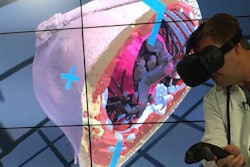The rapid success of applying deep learning to many challenging computer-vision tasks derives from being able to train on well-annotated image datasets, such as the ImageNet database for visual object recognition research. No such comparable image dataset exists in the medical domain, however, according to senior author Dr. Ronald Summers, PhD, of the U.S. National Institutes of Health (NIH) Clinical Center.
Hospitals store vast amounts of images and reports on their PACS, "but the main challenge lies in how to obtain ImageNet-level semantic labels with the assistance of the diagnostic information stored in PACS," Summers said.
Conventional means of collecting image labels are not applicable due to the shortage of a large group of clinically trained annotators and the unavailability of a high-quality medical image search engine. As a result, the NIH team developed an automated system based on deep learning that achieved a high level of accuracy in categorizing and then labeling image clusters from a large-scale radiological database.
The group, which includes presenter Xiaosong Wang, PhD, and Le Lu, PhD, believes that the method could dramatically advance the application of deep-learning techniques in medical imaging, such as computer-aided detection (CAD). With this approach, all data currently being stored in hospitals' PACS could be mined and become useful for various clinical purposes.
"Additionally, the presented large-scale labeled image database and the trained [convolutional neural network] model themselves are already a potentially valuable addition to the CAD research community," Summers said.



















